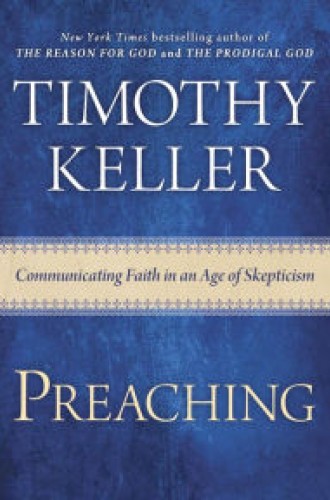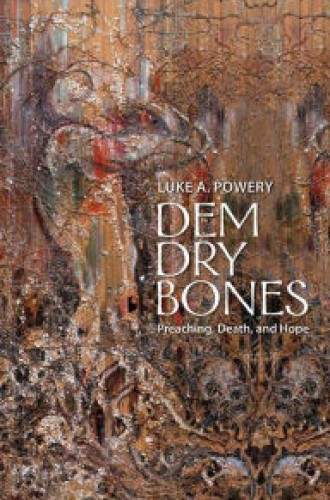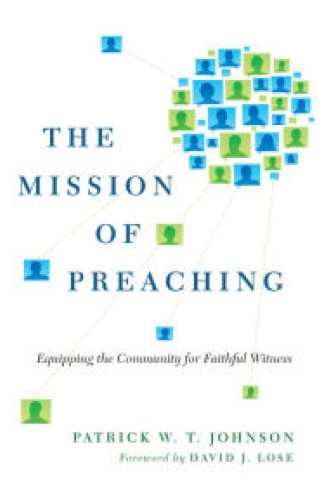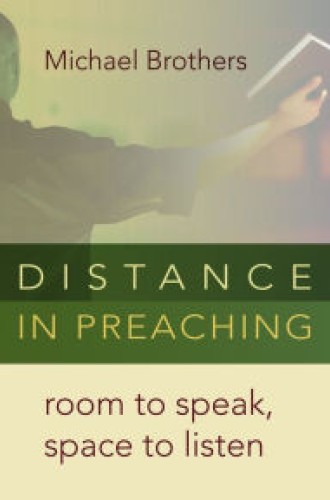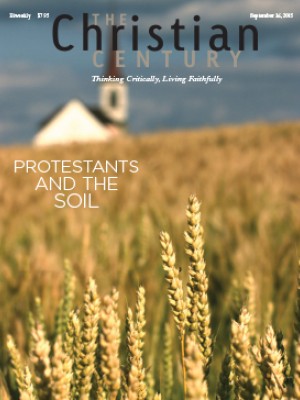Delight in preaching
I had a physical education teacher who had the unenviable task of teaching sex education to us sixth graders. One day she held up a worksheet with various parts of the anatomy labeled, and apologized: “I know this is sort of unromantic.”
Books on preaching can leave us similarly cold. The authors I’m reviewing agree that the real goal of such books is sermons that glorify God and edify the church and world—not sermons that fit someone’s worksheet for preaching.
Timothy Keller’s Preaching is, like the sermons he preaches at Redeemer Presbyterian in New York City, full of both homespun wisdom and academic rigor. Martin Marty once said that the best wisdom in the church comes from the left of the right and the right of the left—which is not the same as the middle. Keller is on the left of his right-wing church, the Presbyterian Church in America, and is one of the best sources of wisdom in the church today.
He makes the case here for doing more expository preaching than most mainline ministers do. Such preaching shows the congregation that the preacher holds the entire Bible to be true. It also offers sermons with more depth for longtime churchgoers than does topical preaching aimed at outsiders. While I’m not likely to start offering a verse-by-verse exposition of, say, Judges, Keller nudges me to let scripture lead and my pet topics fall away.
Read our latest issue or browse back issues.
Keller is at his best in engaging cultural issues—surely the gift that makes his ministry such a success in Gotham. The gospel, he writes, says “yes and no and yes” to our deepest moral longings. Our desire for inclusion or justice comes from God’s own passion for those things. Yet the gospel also says no to many forms of human longing in their current sinful state. In Christ these longings are judged, then gathered up and restored in new and surprising form. I won’t preach to the culture in quite the same way after reading that.
There’s an odd fault line in Keller’s footnotes (and he has nearly 100 pages of them). His interlocutors on hermeneutics are all conservative PCA types to his right (among whom Keller would be condemned as a dangerous liberal were he not so successful a pastor). His interlocutors on culture, however, are mostly Catholics, with a heavy helping of Charles Taylor. I’d like to see him challenge his own sources more in hermeneutics and read as broadly on that topic as he does on others. But his readings of scripture are brilliant, and they make me want to preach—something rather rare for a book on homiletics.
Luke Powery wrote Dem Dry Bones while he was a professor of preaching at Princeton Theological Seminary and before becoming dean of Duke Chapel. He takes aim at prosperity preaching among his fellow African Americans: “Preaching that ignores death is irresponsible, a theological lie, and unable to declare real hope.” The painful irony of prosperity preaching in the black community is that the African-American church gave the world the inestimable treasure of the spirituals, with their embodiment of deep pain and unfathomable hope. This book and two others in an “informal trilogy” that Powery calls Spirit Speech tenderly unpack this tradition for the cause of preaching.
My first reaction to Powery was that he was condemning somebody else’s sins. My church doesn’t go in for teaching prosperity, does it? But Powery turned on me like Paul does on the Romans, showing how we all seek blessings from God without crosses in them.
White liberal churches don’t sing spirituals often enough, and when they do it can come off as patronizing. But spirituals can be the remedy for an ailment the church doesn’t know it has. They’re born of suffering, struggle, blood, and death—which much preaching ignores. To quote a source Powery does not, Karl Barth: “Only where there are graves can there be resurrection.”
Powery sides with those scholars who say the talk of heaven in the spirituals is not escapist or otherworldly—it envisions another reality within this world. He also takes a swipe at theologians who seek bloodless atonement or none at all. Black preaching doesn’t just convey information. It renders God present. The spirituals feature a deep biblicism that is not bibliolatry.
Powery includes the words of an unnamed preacher quoted by James Weldon Johnson: “Brothers and sisters, this morning I intend to explain the unexplainable—find out the undefinable—ponder over the imponderable—and unscrew the inscrutable.” Powery shows us how to do that.
But I wanted to hear more from Powery on how churches embody the death-defying homiletic of the spirituals. He has three concrete examples—his own near-death experience as an infant, a moving story about a Mozambican woman giving birth while taking refuge from a flood, and his brother singing a praise song over the grave of his child. I’d love to hear how whole communities make these bones live in their life together. Perhaps that’s for the promised next volume.
I hated Leonard Sweet’s Giving Blood for the first 100 pages. Sweet has a “look at me!” showiness, delivering a neologism on almost every page. He loves acronyms that seem designed to grab easy laughs from a live audience: we live in a TGIF world (Twitter, Google, Instagram, and Facebook) that demands EPIC preaching (experiential, participatory, imagistic, and christological).
Sometimes the inventions pile up: “The art of imagacy is what makes narraphors memorable.” It gets worse: “Transduction or transincarnation is the mind-bending, heartrending, body-spending language of MRI [missional, relational, incarnational] faith.” Such declarations invite not so much refutation as a roll of the eyes.
Cheesiness aside, Sweet has a habit of offering false, binary logic: Did Jesus die to give us points and propositions or to restore us to covenant relationship with God? This is the sort of argumentation used by someone not accustomed to being challenged.
But Sweet turned me into a fan by the end with nuts-and-bolts wisdom, which I first noticed in the questions at the end of chapters. I usually regard these questions as something editors force upon authors, without offering much payoff to the reader. But Sweet’s questions are meaty and patient, and they left me thinking. His readings of scripture are rich and suggestive and left me wanting to go and read likewise.
The book includes a patient, beautiful exposition of the story of the beheading of John the Baptist, of all things. Sweet elsewhere uses Walter Benjamin to summarize the two sorts of stories in scripture—stories of putting down roots and stories of taking wing. He insists, rightly, that we have to defamiliarize the familiar in preaching (his own nifty example: the word billion is cheap nowadays, but a billion days ago there was no critter walking on two feet on planet Earth). He lyrically unfolds the sacramental nature of all created reality and charges preachers to “sear” the identity of Christ onto the souls of listeners. And one line that will draw unanimous amens: the last person to wax lyrical on the goodness of human nature is a pastor’s spouse.
I suspect that Sweet’s cheesiness is intentional. He takes a jab at seminaries for lauding cold reason while denouncing emotion as manipulative. In other words, he’s going to be passionate even if everybody else accuses him of excess. He’s at least having fun, and he implicitly invites us all to join in—in our own way. Sweet has a charming habit of referring to other preachers in honorific terms (X is “the Hildegard of homiletics,” Y is “the Rachmaninoff of preaching”). Sweet strikes me as the Jim Carrey of preaching—a lot of slapstick, and occasionally grating, but someone who can break through to real depths if you hang with him.
Princeton Theological Seminary has a large department of practical theology, which produces lots of scholarship and many graduate students. Two products of this department are Patrick Johnson and Michael Brothers.
Johnson is a parish preacher in a small, thriving church in New Jersey. His dissertation is a running engagement with three works that also had their origin at PTS: Tom Long’s The Witness of Preaching, and dissertations by Anna Carter Florence, now professor at Columbia Theological Seminary, and David Lose, now president of Lutheran Theological Seminary in Philadelphia.
Johnson seeks to build on Darrell Guder’s theology by asking what a genuinely missional homiletic would look like. Folks often misunderstand missional as referring to a narrow field—the history or practice of what used to be called foreign missions. Guder’s Barthianism runs deeper. He sees mission as rooted in the sendings within the Trinity—the Father sends the Son, together they send the Spirit, and God so understood constantly sends the church.
Some readings of Karl Barth suggest that he was tragically uninterested in the Holy Spirit and the church, but for Guder Barth’s genius lies precisely in his focus on the Spirit and on the church as mission. Johnson wonders what difference it makes for preaching.
The answer lies in a patient and loving unpacking of one “paragraph” (running hundreds of pages) in Barth’s Dogmatics, which declares that the world is first the sphere of God’s providence. It is also a sphere of human confusion, where we contort God’s goodness to our own selfish ends. Preaching in such a setting won’t be done by a single figure from the clerical caste set above others. It will be done by a community of preachers, some ordained and some lay (Johnson has an almost Quaker vision of equality). And it will equip people for mission in the world.
Johnson helps me imagine the world more theologically, and he’s surely right that the church’s mission is to energize the whole body to discern its work in God’s world and to contextualize the gospel in our neighborhood. Yet I found myself wondering what this looks like with flesh on. How does Johnson’s own church live this out? Dissertations in practical theology often ignore such practical questions. I bet there are fruitful answers in Johnson’s own practice.
Michael Brothers takes up a gauntlet laid down by Charles Campbell and other postliberal theologians inspired by the so-called Yale school, who draw on Erich Auerbach’s description of the “tyrannical” nature of the Bible’s claim on us. The Bible, they say, “absorbs” us such that we become “participants” in its story.
Brothers doesn’t like this approach. He is troubled that Campbell offers so little theological reflection on the manner of presentation, and he thinks there should be more “distance” (hence his book title) between the claims of the text and the listening congregation. He uses various performance theories taken from the world of theater to make his case, and he defends the great Fred Craddock against Campbell’s approach.
Craddock thought the problem in preaching is that everybody knows the basics of the gospel and is bored with it. So the trick of preaching is to approach the text indirectly, hoping to lure the congregation into making the right conclusions for itself. “Induction,” it’s called, and it fired distinguished careers like Barbara Brown Taylor’s. It’s a storyteller’s approach to scripture, and in Craddock’s hands it’s beautiful. The strength in this book is the way it passes on some gems from Craddock.
Critiquing Campbell seems more appropriate for a book review than a whole book. And it’s hard to find much that’s positive about “distancing” in scripture. We have a God who has come close, called us friends, made us God’s body. How do we then preach?
Ellsworth Kalas reflects on this question out of a lifetime of preaching. He is especially interested in preaching in an age of distraction, and he tries to jujitsu some grace out of the challenge. Parishioners who consult scripture using their handheld devices may be really checking on texts, he says. Distraction can lead to inattentiveness, but it can also lead to genius. Sure, people may be less familiar with scripture and doctrine—but that means preachers have fresh material.
I love Kalas’s biblical asides. He suggests that Moses saw the burning bush because he was willing to “turn aside” and look. Ezekiel, before he says anything, sits where his people sit, and so should preachers. Preachers should be as excited about scripture as an entomologist is about a new beetle. The task of preachers is to keep the memory of Eden alive.
Some common themes emerge from these different books. Several authors want to dethrone the place of the solo star preacher and make the preaching task more communal. Several want to retrieve an image for preaching, such as blood. All see the point of preaching as increasing the church’s faithfulness rather than the preacher’s ego or the church’s size. And all insist that preaching should be a delight, and that it is never reducible to mere technique.


